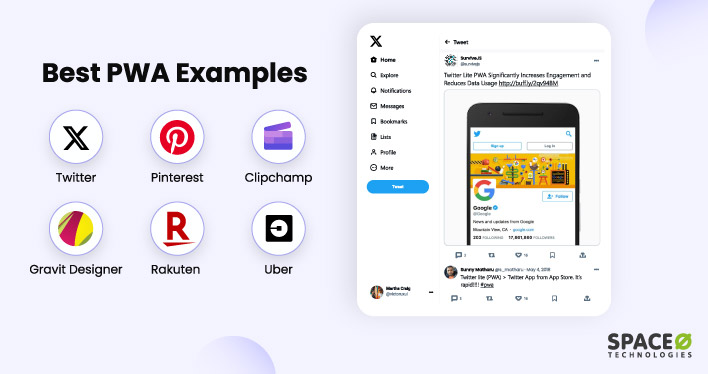Index Surge: Amplifying Your Insights
Stay updated with the latest trends and news across various industries.
Progressive Web Apps: The Future of Mobile Experience Awaits
Discover how Progressive Web Apps are revolutionizing mobile experiences and why you can't afford to miss out on the future of web technology!
What Are Progressive Web Apps and How Do They Transform Mobile Experience?
Progressive Web Apps (PWAs) are web applications that combine the best of both web and mobile apps, offering users an enhanced experience by leveraging modern web capabilities. They are designed to be reliable, fast, and engaging, even in uncertain network conditions. PWAs use service workers to cache content and functionality, allowing them to work offline or on low-quality networks. This means users can access critical features without needing to connect to the internet, which significantly improves their overall browsing experience.
One of the most transformative aspects of PWAs is their capability to provide a native app-like feel while being easily accessible through web browsers. They can be installed directly onto a user's device without going through app stores, streamlining the process for users. Additionally, PWAs support push notifications, allowing for ongoing engagement and real-time updates. With their cross-platform compatibility, PWAs ensure that the mobile experience is consistent, intuitive, and seamless, whether on a smartphone, tablet, or desktop.

Top Benefits of Progressive Web Apps for Businesses and Users
Progressive Web Apps (PWAs) offer a multitude of benefits for both businesses and users, making them an essential tool in today’s digital landscape. For businesses, PWAs provide a cost-effective solution to development. By leveraging web technologies, companies can create a seamless experience across various devices without the need for multiple native applications. This not only reduces development and maintenance costs but also increases accessibility. Furthermore, PWAs are designed to load quickly and offline, enhancing user engagement and reducing bounce rates significantly.
For users, the benefits of Progressive Web Apps are equally compelling. PWAs offer a smooth, app-like experience through fast load times and intuitive navigation. They can be added directly to the home screen of mobile devices, eliminating the need for app store downloads. Additionally, PWAs are built with responsive design principles, ensuring compatibility across different screen sizes and resolutions. This user-centric approach enhances satisfaction and retention, creating a win-win situation for both businesses and customers.
How to Build a Progressive Web App: A Step-by-Step Guide
Building a Progressive Web App (PWA) involves a series of defined steps that ensure your app is fast, reliable, and engaging. To start, you should define the purpose of your app and identify its core features. Following this, you can create a basic wireframe to visualize the layout and user experience. Once you have a clear plan, choose a suitable technology stack, commonly including HTML, CSS, and JavaScript. After setting up your development environment, move on to developing your app's main interface, ensuring it is responsive and adapts seamlessly across different devices.
Next, it's essential to implement key PWA features that enhance usability and performance. First, create a Service Worker, which enables offline capabilities and caching for faster loading times. Use the Web App Manifest file to configure how your app appears on the user's home screen, including icons and start-up screens. Remember to test your app thoroughly with tools like Lighthouse to ensure it meets PWA standards. Finally, host your PWA on a secure server (HTTPS) and monitor its performance regularly. By following this step-by-step guide, you'll be well on your way to creating a high-quality Progressive Web App.